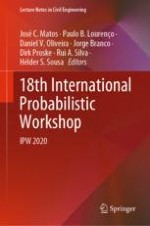2021 | OriginalPaper | Buchkapitel
Risk-Driven Decision Making Within the Observational Method: Case Study Based on the New International Airport of Mexico City
verfasst von : Antonios Mavritsakis, Martin de Kant, Joost van der Schrier
Erschienen in: 18th International Probabilistic Workshop
Aktivieren Sie unsere intelligente Suche, um passende Fachinhalte oder Patente zu finden.
Wählen Sie Textabschnitte aus um mit Künstlicher Intelligenz passenden Patente zu finden. powered by
Markieren Sie Textabschnitte, um KI-gestützt weitere passende Inhalte zu finden. powered by
